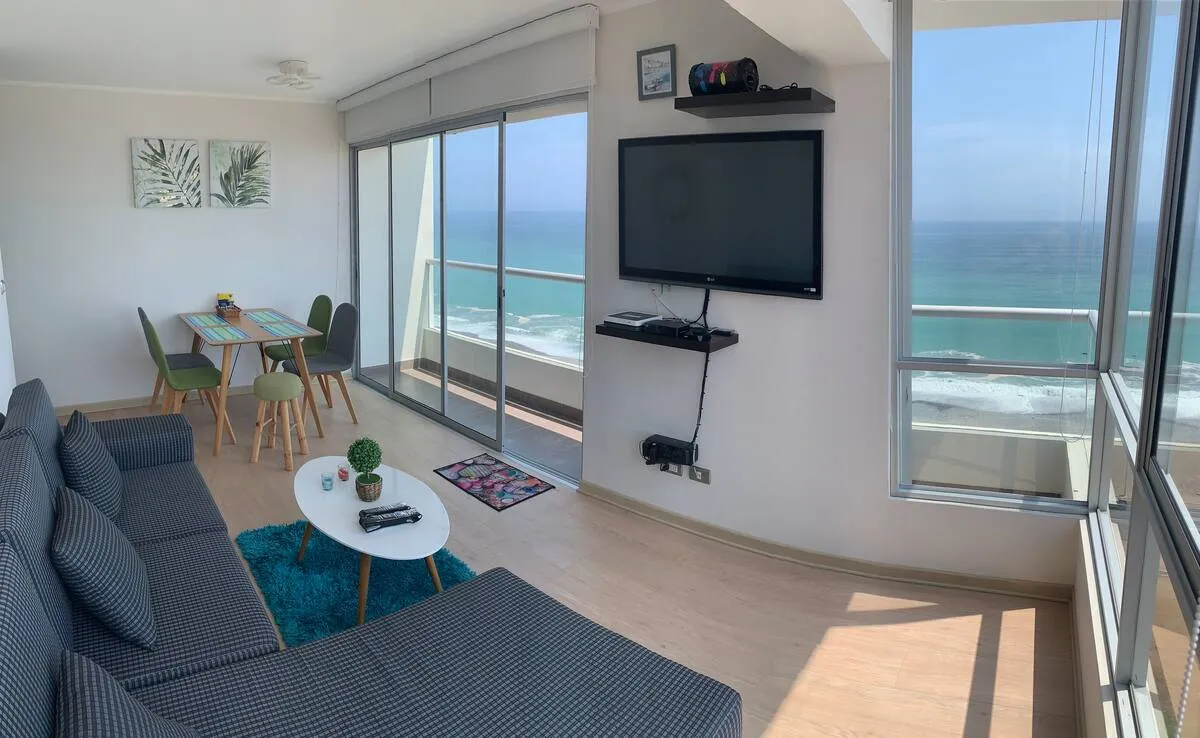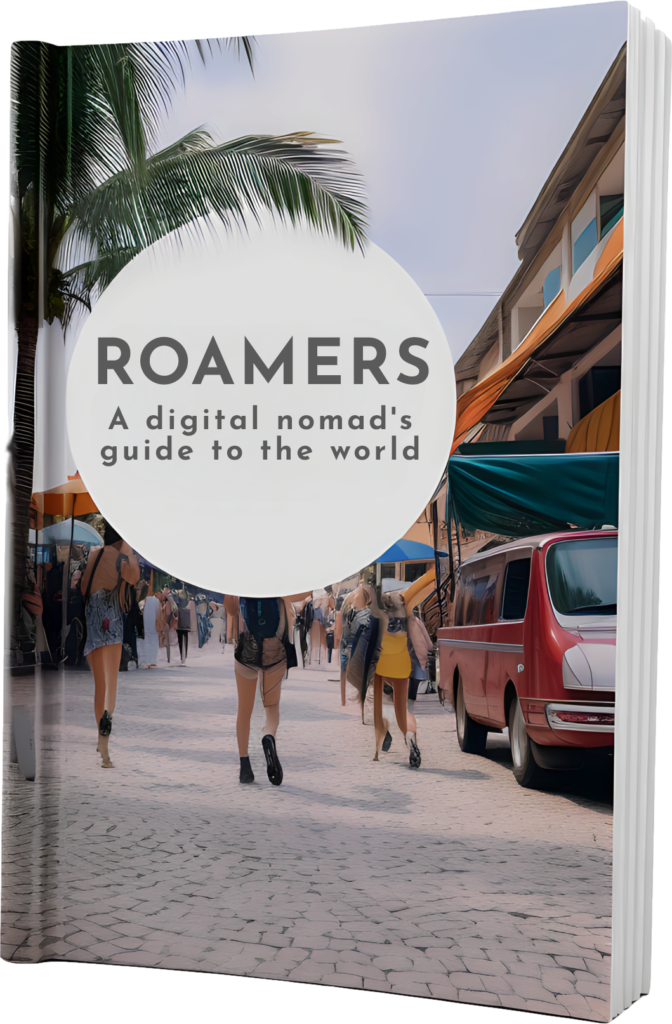Are you looking to relocate to Lima but are unsure how expensive life on the Pacific coast of Peru is? We got you covered!
In this post, we’ll break down costs for the following main categories:
Lodging | Food | Services | Transportation | Entertainment | Totals
Lodging
Apartment costs can vary wildly in Lima, as with most South American metropolises, based on the area and amenities. With various upscale neighborhoods catering to the richer locals and foreign expats, you can certainly find apartments with monthly prices well above $2000 USD.
For the price conscious nomad, clean apartments, in middle-class, safe neighborhoods (Magdalena del Mar, San Isidro, Barranco, San Miguel) can be found in the $600 to $900 range. In Miraflores, the foreigner district, an average 1 bedroom condo will cost you around $1000-$1300 a month. Those usually come with nice views of the city or the coast.
If you’re really trying to save on costs, San Miguel and Lince are probably the cheapest neighborhood I would personally stay in safety wise. Other areas may be cheaper, but those are significantly more unsafe. In general, avoid renting in the northern part and outside of the central areas. As with the rest of South America, the further out from city center, the poorer the area.
These prices may not seem like the biggest bargain, but consider that all utilities are included (internet, heating, water, electricity) – which really puts things in perspective. And don’t forget you’re in a megacity of nearly 11 million inhabitants either!
San Miguel – 2 Bedrooms – $1000/month
This one was quite cozy, but great internet, a beautiful view, a pool on the ground floor and a gym. 24 hour security as well, with friendly building staff.
San Isidro – 1 Bedrooms – $900/month
Away from the coast, this unit lies right in front of the financial district, the CBD of Lima. If you like city skyline views, this is the spot. This place came with maid service and 24/7 security. Decorated tastefully and with a full kitchen, I actually spent 3 months in this unit.
San Miguel – 3 Bedrooms – $1300/month
This one was quite luxurious, a corner unit with North and West views and a beautiful balcony overlooking the beach. Nothing quite like falling asleep to the sounds of waves crashing on the coast. Everything was quite upscale in this unit, and it is on the higher range of what you would find in San Miguel. The neighborhood was “safe”, but I would be careful if walking around solo at night. Rooftop pool, gym, security, cable and solid internet connection were welcomed amenities.
Food
Just like housing, food is also a cost that can vary greatly in Lima. From cheap local eateries to world class fine dining, the city has it all.
Peruvian cuisine in itself is great, but what’s more is that Peruvians generally take pride in their cooking. Combine this with a proximity to the sea that allows for all kind of fresh seafood and you have a great spot for foodies.
The greatest part about Peruvian food is it’s variety.
Like fish? Ceviche
Like chicken? Aji de gallina
Like beef? Lomo saltado
In terms of costs, I normally ate for about $7-12 USD per meal. However, I eat out every day, so this is delivery and restaurant food. You can spend more (WAY more in Lima with all the options), or less if you buy groceries and cook for yourself.
On groceries you could live on $150-250 a month of food and eat well. I personally spent about $400-$600 monthly.
Again, I like to enjoy a certain lifestyle when travelling, but you can survive on way less if you cook for yourself and are a bit budget conscious.
Food costs (2020)
Low end: $200
Comfortable: $500
Baller: $1000
If food is a selling point for you to pick a city to spend some time in as a nomad, Lima is a must-see. I’m pretty picky and there are plenty of South American countries I don’t particularly like the food in, but Lima, and Peru at large, is world class.
Services
Lima has pretty solid cellphone coverage, and, if you’re lucky, really good internet. Overall most places were acceptable for remote work requiring permanent connection and video calls. However, I’ve had some poor experiences too. This also falls under lodging, but in Lima I’d recommend getting a speedtest from the rental owner and checking reviews for positive comments about the internet before booking a unit. However in terms of costs, by staying in airbnbs, I don’t have to factor them in. Same goes for electricity, gas and water. Cellphone wise, you’ll find the usual suspects in Peru, Claro and Movistar, along with some other brands. Both have pretty fast connections and I was getting near-LTE speeds in many places in the city. Plans are cheap and include lots of data. Generally, you can get decent plans for about $10, but I personally had a plan for about $17 which included 30 GB of data, plenty to tether my laptop should I have an internet outage. Insurance is a given cost, but not dependent on Lima, but I currently pay $40 a month for worldwide health insurance. I personally don’t use anything other than health insurance, so that is my total cost on that front.
Visa fees: Peru has no fees for Canadian or American tourists and 90-day visa on entry.
Monthly service costs
Services: $55
Transportation
Transportation in Lima is chaotic, but manageable.
Honestly, I would avoid buses and collectivos (smaller buses and vans that people cram into which is really popular across South America) altogether in Lima and use Uber. It’s so cheap, I’ve gotten rides 45 minutes across the city for $5 USD. Ubers are also generally safer than taxis, as there have been stories of solo women getting robbed and assaulted by taxis in the past few years. It’s not a city I would be scared in, but as always, especially if you don’t speak the language or don’t have much travel experience, stay careful!
For most things you typically won’t need to travel far enough to use transport anyways. Daily items can be obtained in most bodegas (convenience stores) littering every street. To avoid using much transit, it’s not a bad idea to look for airbnbs near a mall, and Lima has quite a few great malls (Plaza San Miguel, Real Plaza Salaverry and Larcomar were personal favorites).
Generally, recurring transport costs here will mostly be to visit the city, and most cab rides for about 20-30 minutes will cost you under $5. Additionally, day trips to the beautiful surrounding areas.
Left to right: Intercity buses, Collectivos, Lima Subway and typical taxis in Lima.
There is a metro, but it’s not well developed yet, and I personally never tried it, although I’ve been told it’s good enough, so long as your departure and arrival points are both not too far from one of the stations.
Transportation to places like Ica (in the desert – about 4 hours) or Lunahuana (at the base of the Andes, produces lots of wine and pisco – about 3 hours) will run you anywhere from $20 to $200 depending on whether you take a bus, or private transportation. Buses are generally safe and modern for these kinds of distances Major bus stations in Lima: Movil buses
I’m pretty sure from these 3 stations, you can make it anywhere in Peru (yes, even Cusco if you’re crazy enough not to fly there and are willing to spend over 24 hours in a bus)
Monthly transportation costs
$30 (Not including trips outside the city)
Entertainment
Entertainment is generally cheap in Lima, however I found that there wasn’t a ton of bars to drink at in some parts of the city. For a good night, head to Barranco south of Miraflores. The artsy district is home to many bars and some nightclubs. I can’t recall the name of the ones I visited unfortunately, but if you’re like me and enjoy house and techno music, check out Superclub Peru, the top promoters in the country, as they always throw great events in and outside of the city.
At bars, a beer will run you $2-4 dollars, and at a nightclub, somewhere in the $5 range. Not incredibly cheap, but certainly cheaper than a city of similar size like NYC or LA!
The city has lots of free, or very low cost parks to visit, as well as historical landmarks. A ticket to these should never cost you more than $10 at most, usually half of that.
Beaches are public – so no need to factor that in either.
Futbol matches are great fun and I’m a huge fan of the sport, and those will run you about $7-15 a game, depending on where you sit or stand.
Monthly entertainment costs
Entertainment: $170
This includes 2 nights out at nightclubs, multiple futbol matches and visiting tourist spots in the city.
Totals
I will split the typical budget into 3 categories based on lifestyle and spending
Low end – local apartment in a middle-class neighborhood. Grocery shopping and cooking at home. Little to no entertainment spending, doing mostly free activities and little drinking.
Mid end – nice studio or 1br apartment in a good neighborhood. Eating out and doing minimal cooking at home. Some entertainment spending, going out to drink once a week and some tourist dollars!
High end – baller status. Nice penthouse or high end condo with a view, in the best neighborhood. Eating at fancy restaurants and never cooking. Going out multiple times a week, to nightclubs, bars, sporting events, and lots of tourist dollars
Low end
$850
Mid end
$1700
High end
$4000
Overall, Lima is an affordable city to live in. Mid end may seem high, but that is a lifestyle that would easily cost double, if not triple in a North American or European city of a similar size. We’re talking eating delivery or at restaurants pretty much 100% of the time, in a nice, modern condo in a good part of town, and going out once a week! Anything you make over that you can save, invest or splurge on other things.
Keep in mind that your mileage may vary based on other factors. I spend a lot of time doing video calls for work, so I don’t do co-working spaces typically. If you do, that’s an extra cost to factor in.
Also, what I consider low end might be great for someone who likes shopping small local markets, go run by the beach and doesn’t spend, nor wants to spend all their time working. I could afford all my needs with working a fraction of the time I currently work if I was willing, or desired, to live that way.
Recommendations are prices are based on when I was in Lima, for most of 2020. Things may have changed since. If any info is incorrect, leave a comment and I’ll amend the article!
Want to find out more about Lima, Peru? Check out our Lima article collection!



